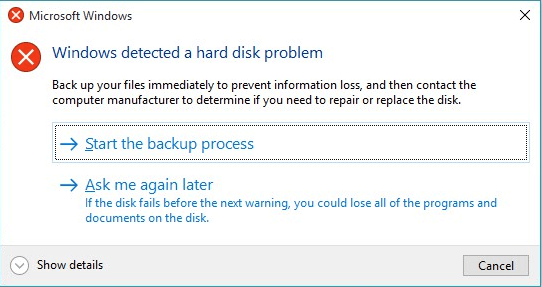Microsoft Hard Disk Drive Driver Download For Windows
- A boot-start driver distribution disk is a medium, such as a floppy disk or USB flash drive, that contains a TxtSetup.oem file and the related driver files. The TxtSetup.oem file is a text file that contains a list of hardware components, a list of files on the distribution disk that will be copied to the system, and a list of registry keys.
- The driver download area could be called by any of several different names including Downloads, Software Downloads, Driver Downloads, Drivers, Drivers and Firmware, Drivers and Software, etc. If you visit a website's home page first, look for a Support area. Any driver download options will probably be located within that area.
- The Windows XP startup disk will automatically load the correct drivers to gain access to the CD-ROM drive and start a new. Windows XP SP1 Pro Startup Disk v.310994 The Windows XP startup disk allows computers without a bootable CD-ROM to perform a new installation of the operating system.
Whilst installing Windows 10 with a DVD drive, installation gave me an error, saying: Windows can't be isntalled on drive 0 partition 1. When I click on it, it says: 'Windows cannot be installed to this disk. Windows needs the driver for device Disk Drive. Click 'Load Driver' and load the required device driver'. Reinstall the device driver. In the search box on the taskbar, enter device manager, then select Device Manager. Right-click (or press and hold) the name of the device, and select Uninstall. Restart your PC. Windows will attempt to reinstall the driver.
To install Windows on some hardware designs, you may need to add device drivers to Windows Setup. You can add drivers to Windows Setup by using an answer file that specifies the path to the driver files. To do this in new installations, you add the Microsoft-Windows-PnpCustomizationWinPE component during the windowsPE configuration pass, add the driver paths, and then specify the answer file.

You can also modify existing images and add and remove drivers. You can service offline images in several ways. For example, you can add the Microsoft-Windows-PnpCustomizationsNonWinPE component during the offlineServicing configuration pass, add or remove the driver paths, and then specify the name of the answer file. For more information about how to modify drivers on an offline Windows image by using an answer file, and also other methods of adding drivers to and removing drivers from an existing image, see Add and Remove Drivers to an Offline Windows Image.
Add Drivers to New Installations (windowsPE)
For new installations, you add drivers during the windowsPE configuration pass.
This method initializes Windows Preinstallation Environment (Windows PE) and processes Windows PE settings from the answer file, as follows:
Windows stages the Windows PE drivers in the RAM driver store.. Windows loads boot-critical drivers that Windows PE requires to access the local disk and network. When you right-click DevicePaths and select Insert New PathAndCredentials into Windows PE, Windows PE processes other Windows PE customizations that the answer file specifies.
The Windows Setup process applies the Windows image. Boot-critical drivers appear on the Windows image before Setup installs that image. Other drivers that you added to the Windows PE driver store appear in the Windows image driver store. When Windows Setup processes the offlineServicing pass, Windows Setup also adds any drivers that the driver path specifies to the Windows image driver store.
Microsoft Hard Disk Drive Driver Download For Windows 8.1

To add a device driver during the windowsPE pass
Use Windows System Image Manager (Windows SIM) to create an answer file that contains the paths to the device drivers that you intend to install.
Add the Microsoft-Windows-PnpCustomizationsWinPE component to your answer file in the windowsPE configuration pass.
Expand the Microsoft-Windows-PnpCustomizationsWinPE node in the answer file. Right-click DevicePaths, and then select Insert New PathAndCredentials.
A new PathAndCredentials list item appears.
For each location that you access, add a separate PathAndCredentials list item.
You can include multiple device driver paths by adding multiple PathAndCredentials list items. If you add multiple list items, you must increment the
Keyvalue for each path. For example, if you add two separate driver paths, the first path uses theKeyvalue of1, and the second path uses theKeyvalue of2.Save the answer file, and then close Windows SIM. The answer file must resemble the following example:
Boot to Windows PE.
At a command prompt, run Windows Setup. Specify the name of the answer file. For example:
Windows Setup adds the device drivers in the serversharedrivers path to the system during the setup process.
For more information about drivers, see Device Drivers and Deployment Overview and Add a Driver Online in Audit Mode. For more information about Windows components, see Unattended Windows Setup Reference.

Related topics
-->To install Windows on some hardware designs, you may need to add device drivers to Windows Setup. You can add drivers to Windows Setup by using an answer file that specifies the path to the driver files. To do this in new installations, you add the Microsoft-Windows-PnpCustomizationWinPE component during the windowsPE configuration pass, add the driver paths, and then specify the answer file.
You can also modify existing images and add and remove drivers. You can service offline images in several ways. For example, you can add the Microsoft-Windows-PnpCustomizationsNonWinPE component during the offlineServicing configuration pass, add or remove the driver paths, and then specify the name of the answer file. For more information about how to modify drivers on an offline Windows image by using an answer file, and also other methods of adding drivers to and removing drivers from an existing image, see Add and Remove Drivers to an Offline Windows Image.
Add Drivers to New Installations (windowsPE)
For new installations, you add drivers during the windowsPE configuration pass.
This method initializes Windows Preinstallation Environment (Windows PE) and processes Windows PE settings from the answer file, as follows:
Windows stages the Windows PE drivers in the RAM driver store.. Windows loads boot-critical drivers that Windows PE requires to access the local disk and network. When you right-click DevicePaths and select Insert New PathAndCredentials into Windows PE, Windows PE processes other Windows PE customizations that the answer file specifies.
The Windows Setup process applies the Windows image. Boot-critical drivers appear on the Windows image before Setup installs that image. Other drivers that you added to the Windows PE driver store appear in the Windows image driver store. When Windows Setup processes the offlineServicing pass, Windows Setup also adds any drivers that the driver path specifies to the Windows image driver store.
To add a device driver during the windowsPE pass
Use Windows System Image Manager (Windows SIM) to create an answer file that contains the paths to the device drivers that you intend to install.
Add the Microsoft-Windows-PnpCustomizationsWinPE component to your answer file in the windowsPE configuration pass.
Expand the Microsoft-Windows-PnpCustomizationsWinPE node in the answer file. Right-click DevicePaths, and then select Insert New PathAndCredentials.
A new PathAndCredentials list item appears.
For each location that you access, add a separate PathAndCredentials list item.
You can include multiple device driver paths by adding multiple PathAndCredentials list items. If you add multiple list items, you must increment the
Keyvalue for each path. For example, if you add two separate driver paths, the first path uses theKeyvalue of1, and the second path uses theKeyvalue of2.Save the answer file, and then close Windows SIM. The answer file must resemble the following example:
Boot to Windows PE.
At a command prompt, run Windows Setup. Specify the name of the answer file. For example:
Windows Setup adds the device drivers in the serversharedrivers path to the system during the setup process.
Microsoft Hard Disk Drive Driver Download For Windows 8.1
For more information about drivers, see Device Drivers and Deployment Overview and Add a Driver Online in Audit Mode. For more information about Windows components, see Unattended Windows Setup Reference.

Related topics

 -->
-->